Hello fellow bird enthusiasts!
As someone who has always been fascinated by the majestic beauty and soaring grace of hawks, I am thrilled to share with you my latest discoveries on the diverse hawk species that call Washington State their home.
In this article, we will delve into the world of these awe-inspiring birds of prey and uncover the eight types of hawks that can be found soaring the skies of the Evergreen State.
So, let’s grab our binoculars and embark on an adventure to learn more about these impressive raptors that dominate the skies of Washington State!
| Image | Name |
|---|---|
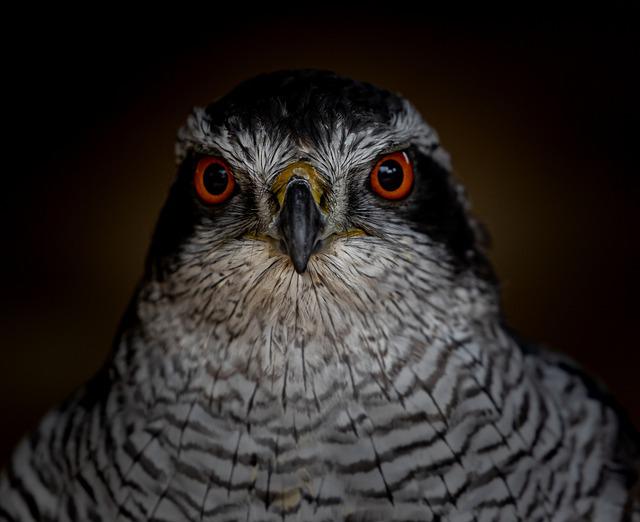 | Northern Goshawks |
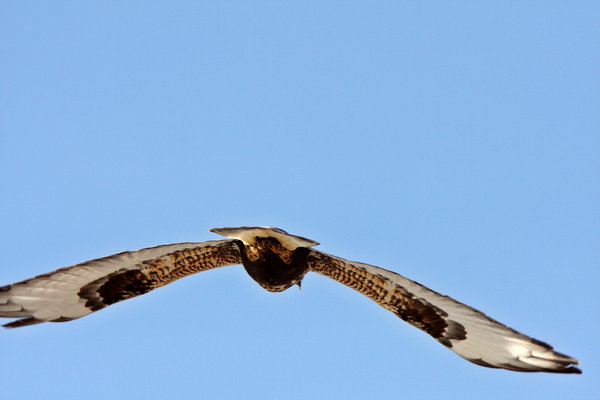 | Rough-legged Hawks |
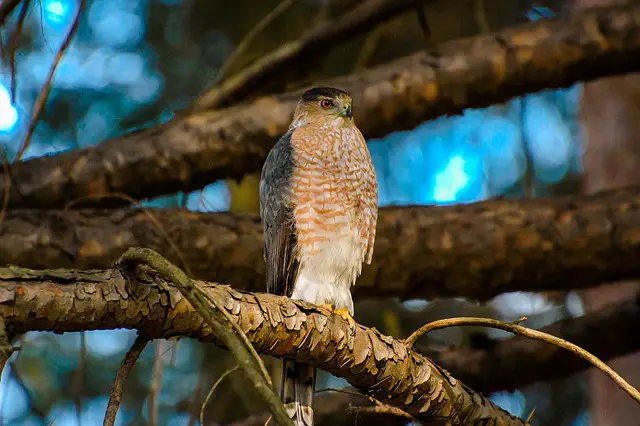 | Cooper's Hawks |
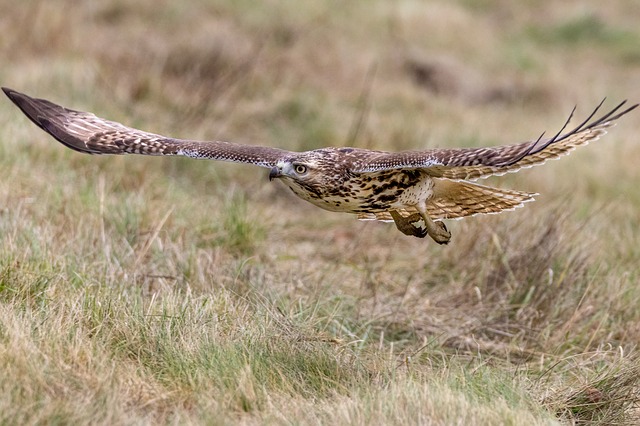 | Red-tailed Hawks |
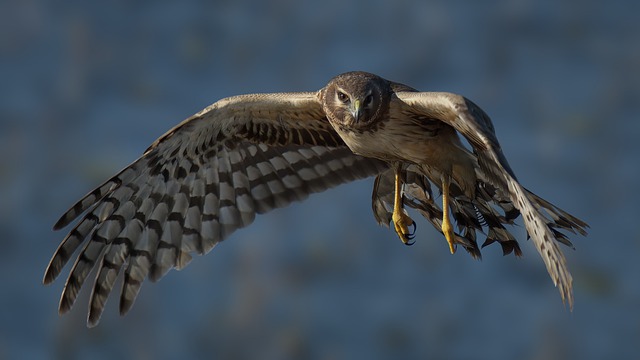 | Northern Harrier |
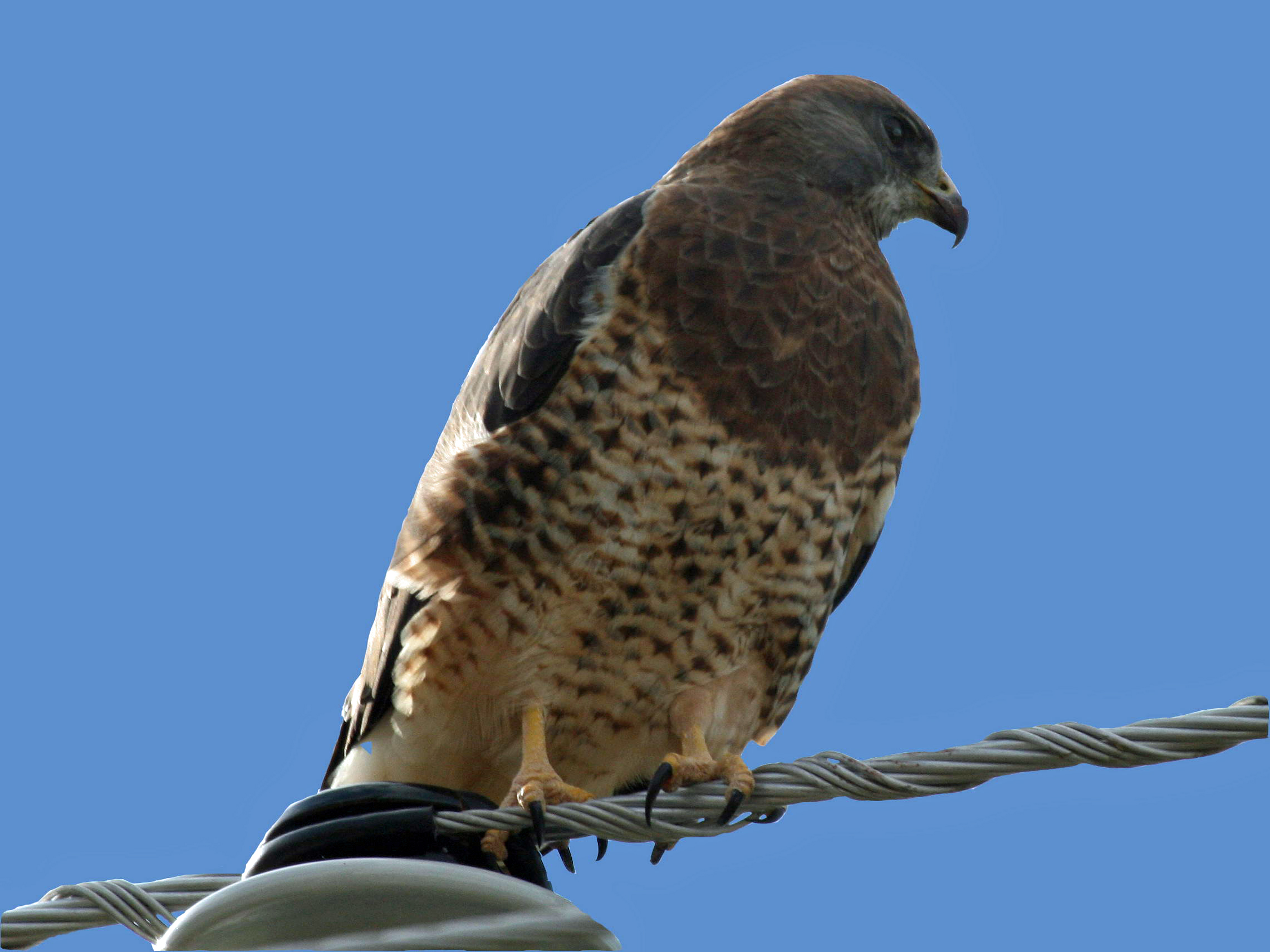 | Swainson's Hawk |
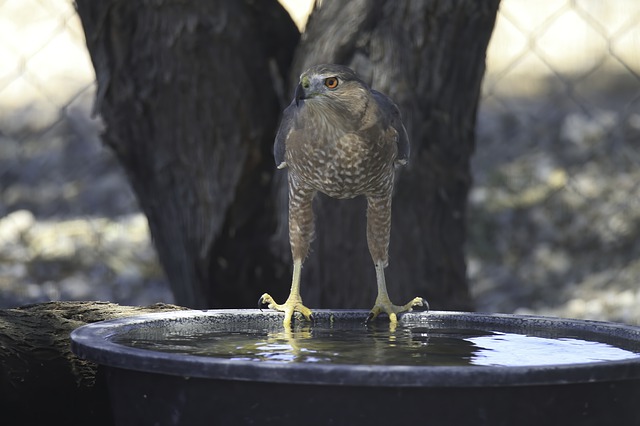 | Sharp-shinned Hawk |
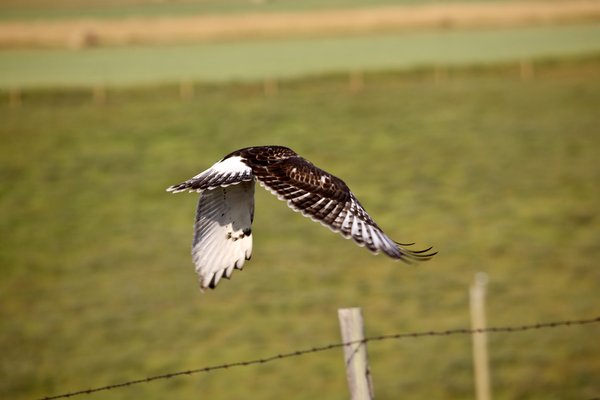 | Ferruginous Hawk |
Types of Hawks in Washington
1. Northern Goshawk

Each and every month of the year, the whole state of Washington is filled with Northern Goshawks.
Northern Goshawks, the same as Cooper’s Hawks and Sharp-shinned Hawks, are accipiters with elongated, curved wings and a long, prehensile tail.
In contrast, Northern Goshawks are the biggest of the accipiters found throughout North America, dwarfing even the Harris’s Hawk.
The Northern Goshawk is a bird of mystery.
Even though they’re the most common accipiter, locating them may be difficult since they like to hide in huge, thick woods.
The Northern Goshawk is recognizable by its gray feathers, crimson eyes, and white stripes that mimic eyebrows.
Attila the Hun decorated his helmet with a depiction of a lion because it was seen as a sign of power.
Falconers have been using Northern Goshawks for hunting for almost 2,000 years.
Historically, these hawks earned the name “cooks hawks” due to their skill in bringing in fresh meat for meals.
2. Rough-legged Hawk

The whole state of Washington is considered non-breeding territory for Rough-legged Hawks.
They spend most of their time on the broad Arctic tundra, which is also where they reproduce.
They spend the winter in southern Canada, and the southern half of the United States, however, so it’s important to note that they travel south in the autumn.
They may be seen in Washington State throughout the wintertime, albeit they are more elusive than other species.
The abundance of lemmings, a main food source in the Arctic, has a significant impact on the population of these birds, which may change dramatically annually.
The Rough-legged Hawk gets its name from the feathers on its legs, which keep it warm in the Arctic.
These hawks, along with the Golden Eagle, constitute the only raptors in the Americas to have plumage on their legs and feet.
These buteo hawks, known as Rough-legged Hawks, are the largest of the species.
Although they have tiny beaks and feet and longer tails than other buteos, they are nonetheless classified as buteos.
During the flight, their wings are held in a “V” formation, and their tails are spread out.
North American birds come in a wide range of feather colors, from light to dark.
As adults, males of the light morph have whitish underparts and grayish-brown uppers, whereas males of the dark variant are normally dark brown throughout except for their underwings.
3. Cooper’s Hawk

Cooper’s and Sharp-shinned Hawks seem quite identical, both having a silvery bluish back and wings with reddish banding on the abdomen, but Cooper’s Hawks are bigger.
Although female hawks are usually bigger than males, it’s not unusual to see disparities between giant female Sharpies and little male Coopers.
Cooper’s Hawks may be distinguished from other hawks thanks to their broader heads and rounder tails.
Some of the best aviators are birds, and Cooper’s Hawks are among the best.
Their strength, quickness, and stealth make them dangerous predators, and they can even chase animals through the air at breakneck speeds.
A Cooper’s hawk may swoop down on your garden feeders, but you shouldn’t be alarmed.
They’re virtually handing the hawks their food.
Larger birds like jays, starlings, doves, robins, chickens, grouse, and quail are their favorites, but they can eat tiny birds if necessary.
Although Cooper’s Hawks are common in most of Washington State all year, they are restricted to the state’s northern regions during the breeding season.
These hawks have a reputation for being cruel. Cooper’s hawks, like other hawks, may kill their prey by gripping its neck or head until it dies; however, these birds have also been reported drowning their victim.
4. Red-tailed Hawk

The red-tailed hawk is the continent’s most widespread hawk species.
These huge hawks spend all year round in the state of Washington.
Their massive stature, bright red tails, and high-pitched cries make them instantly recognizable.
Red-tailed Hawks are frequently observed waiting patiently for prey in elevated positions, such as on telephone lines or in trees.
Instead of hunting birds like a cooper or sharpie, they prefer to eat small to medium-sized animals.
Despite their abundance, it is nonetheless exciting to catch sight of one of these beautiful raptors.
The distinctive, raspy call of the Red-tailed Hawk is instantly recognizable as that of a raptor.
In fact, the shriek of a Red-tailed Hawk is the one most often utilized in films to represent the ferocity of these predatory birds.
I bet while you read this, the music is playing in your brain.
5. Northern Harrier

Just one species of harrier hawk, the Northern Harrier, is native to North America.
Its northernmost nesting grounds reach Canada, although it spends the wintertime in warmer climes.
The Northern Harrier is widespread throughout Washington state, with potential wintering populations across the western and central regions of Washington.
Northern Harriers, like owls, use both hearing and sight for hunting, and they occasionally use water to sedate their bigger prey.
While men are allowed to have as many as five different female companions at once, most only possess one or two at any one time.
Fields and wetlands are good areas to search for these hawks since that’s where they prefer to live and hunt.
Washington’s Northern Harriers are among the most owl-like of North America’s hawks.
Both their eyesight and hearing are highly developed for this purpose.
6. Swainson’s Hawk
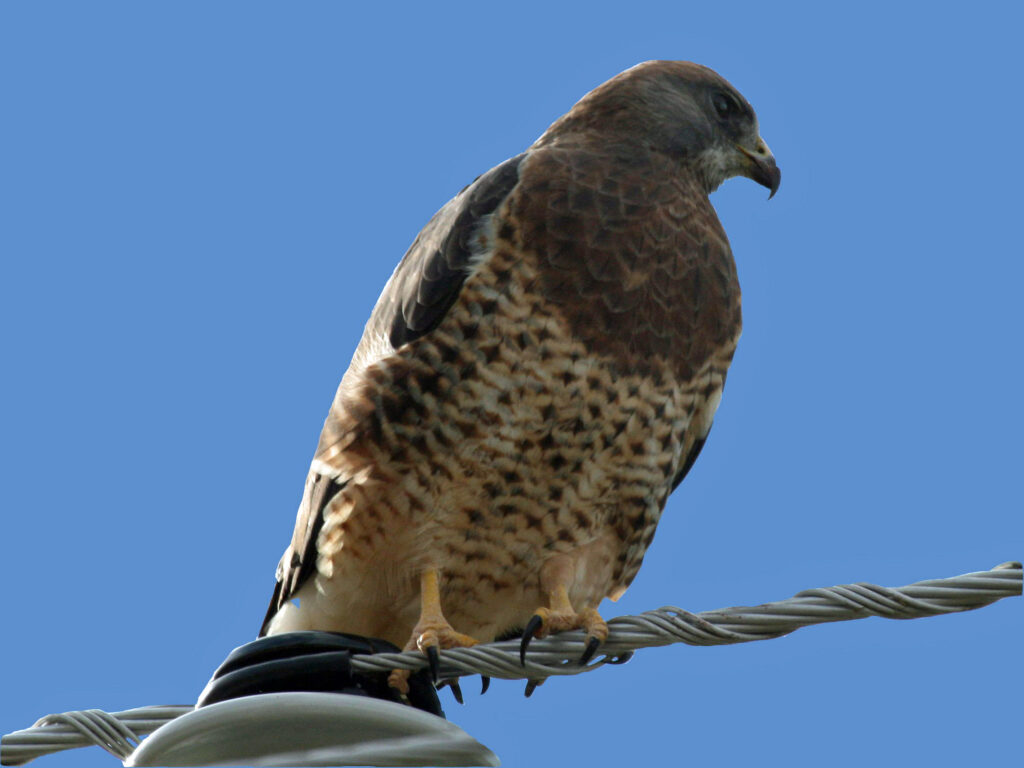
In the summertime, the Swainson’s Hawk may be seen flying over the vast plains of the Great Plains, the West, and even much of Washington State on its short wings.
They go farther than any other North American raptor and often travel in groups of 10,000 or more birds.
In the autumn, they will migrate to Argentina for the winter, and unlike most other hawks, they won’t bother to fly over hills or lake coasts to get there.
Actually, this hawk’s diet shifts around depending on whether or not it is reproducing.
While they’re raising young, they stick to the standard “buteo” diet of small mammals like rabbits, reptiles, and rats, but if they’re not breeding, they switch to an almost entirely insect diet.
In the wild, they actively seek out grasshoppers and dragonflies to eat.
In order to achieve maximum speed while pursuing bigger food like rodents, these birds fly with their wings folded in a shallow V configuration.
7. Sharp-shinned Hawk

The Sharp-shinned Hawk, which may be found across Washington State, Canada, and the remainder of the United States, is the tiniest species of hawk in the world.
Swainson’s Hawks winter across Washington State; however, in certain areas, they leave for warmer climes.
It’s not hard to spot one of these little hawks since they’re distributed all throughout North America.
Copper bars decorate their white bellies, and hooded blue-grey feathers cover their backs, napes, and crowns.
It’s easy to see the crimson in their eyes.
Garden bird feeders are often targeted by Sharpies.
If you notice a hawk, it may be best to remove the feeders for an entire week or two, so it may find a new home.
The Sharpie’s diet consists almost entirely of songbirds.
Because of this, they are able to fulfill their crucial role in maintaining sustainable and controllable populations of wild bird species.
8. Ferruginous Hawk

During the mating season, the Ferruginous Hawk may be seen soaring over the forests of central and southeast Washington.
The biggest hawk throughout Washington and North America, it may be seen soaring over the prairies, deserts, and open range of the West.
The word “ferruginous” comes from the contrast between the rusty wings and legs and the white underbelly.
They had reportedly been seen patiently hovering above burrows where prairie dogs or ground squirrels had just emerged.
Preservationists have found an intriguing technique to attempt to keep the hawk population stable: by giving fake nests for the bird to construct.
As their nest sticks are too thick to weave together readily, they prefer to construct on the sites of an abandoned hawk or crow nests.
The presence of bison bones and fur in these nests at the time when bison dominated the West suggests the animal may have played a part in the birds’ diet.
Conclusion
In conclusion, Washington State is a haven for hawks, with its rich and varied landscapes providing ideal habitats for these powerful birds of prey.
From the iconic Ferruginous Hawk to the stealthy Northern Goshawk, and the acrobatic Cooper’s Hawk to the regal Red-tailed Hawk, the diversity of hawk species in Washington State is truly remarkable.
As we’ve explored in this article, each type of hawk has its unique characteristics, ranging from their distinctive physical features, hunting behaviors, and preferred habitats.
Observing these magnificent birds in their natural environment can be a thrilling experience, offering a glimpse into their world of keen eyesight, impressive flight skills, and top-of-the-food-chain status.
It’s important to appreciate and protect these birds and their habitats, as they play a crucial role in maintaining the delicate balance of the ecosystem.
Conservation efforts, such as habitat preservation, monitoring programs, and education about the importance of birds of prey, are vital for their survival.
So, next time you find yourself exploring the breathtaking landscapes of Washington State, keep an eye out for these magnificent hawks and marvel at their splendor.
Let us continue to admire and respect these awe-inspiring birds, ensuring that future generations can also appreciate their significance in the natural world.
FAQ
Are hawks migratory in Washington State?
Yes, some hawk species in Washington State are migratory, while others are resident birds. For example, the Northern Harrier and Rough-legged Hawk are known to be migratory, while the Bald Eagle and Red-tailed Hawk are typically resident birds that can be found year-round.
What do hawks eat in Washington State?
Hawks are birds of prey and primarily feed on small mammals, such as mice, voles, and rabbits. They may also eat birds, reptiles, and insects depending on the species and availability of food in their habitats.
Where can I spot hawks in Washington State?
Hawks can be found in various habitats across Washington State, including forests, grasslands, wetlands, and open areas. Some popular spots for hawk watching include national parks, wildlife refuges, and open fields near water bodies where they can find food.
Are hawks protected in Washington State?
Yes, hawks are protected under state and federal laws in Washington State. It is illegal to harm or disturb hawks or their nests, and they are also protected by the Migratory Bird Treaty Act, which prohibits the taking or harming of migratory birds, including hawks, without proper permits.
How can I identify different hawk species in Washington State?
Identifying hawk species can be challenging as they can have similar appearances. Key identification features include their size, shape, coloration, and behavior. Field guides, online resources, and local birding groups can be helpful in learning to identify different hawk species in Washington State.
What can I do to help conserve hawks in Washington State?
You can contribute to hawk conservation efforts by supporting habitat preservation initiatives, reporting any illegal activities or disturbances to hawks, participating in citizen science programs to monitor hawk populations, and spreading awareness about the importance of hawks and other birds of prey in the ecosystem.
Last Updated on April 26, 2023 by Lily Aldrin
